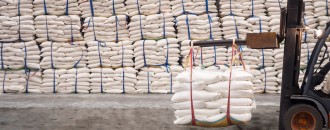
Improper quality checking mechanism hits Indian pharma exports
Mismatch between the regulatory mechanism within the country and international markets creates deadlock for Indian pharmaceutical exports, a study has said. Indian pharmaceutical industry, which made rapid strides in the global markets, has been facing regulatory hurdles especially in the US and EU markets, said a study conducted by the Associated Chamber of Commerce and Industry (ASSOCHAM) and RNCOS. “India has a meager number of 1,500 well equipped inspectors for more than 10,000 factories engaged in pharmaceutical products leading to the country's products facing regulatory hurdles in the overseas markets, which follow stringent protocols for the manufacturing processes,” it said. The study titled ‘Focus on Quality Management in Pharmaceutical Manufacturing’ said that the existing mismatch between the domestic regulatory mechanism and the international regime is resulting in recall and rejection of drugs of well-known companies, thus leading them to unrest. While India has 1.4% share by value and 10% by volume in the global pharma industry, continuation of such unrest would hit pharma exports, said the study, adding, “In the long run, the pharmaceutical exports during the FY’14 reported US$ 14.8 billion of drug exports would take a setback.” “So, there is a need for us to get our own house in order by way of continuous skilling of the regulators at the national and state levels in sync with the best global practices,” said D S Rawat, General Secretary, ASSOCHAM. The industry body also observed that the Indian pharmaceutical industry has a concurrent regulatory practice, which is sometimes poorly manned and poorly headed by less knowledgeable pharmacists who are not properly trained. Lower awareness among such personnel regarding the quality norms is leading to “non-uniform implementation of regulatory standards”. On the other hand, small and medium-sized manufacturers are suffering from fund crunch, which in turn is hindering their capacity to carry out the quality checks. While the government provides subsidies to only those firms that are present in SEZs, manufacturers present out of these zones have not been in a position to avail these benefits, which they are expected to use for the implementation of quality standards. Besides, since the pharmaceutical manufacturing is managed by multiple regulatory authorities, the process of obtaining license for product manufacturing became cumbersome. There are numerous patent offices in metro cities all over India. Each of these offices follows non-uniform patent practices. Thus, these varied practices and poor centralized controls affect the quality of the pharmaceutical products. The absence of global harmonization of quality systems makes it all the more challenging for India that exports to US, Europe, Australia, Japan, etc, to comply with a plethora of regulatory guidelines across the globe, Rawat added.
December 10, 2015 | 02:00pm IST






 to success.
to success.